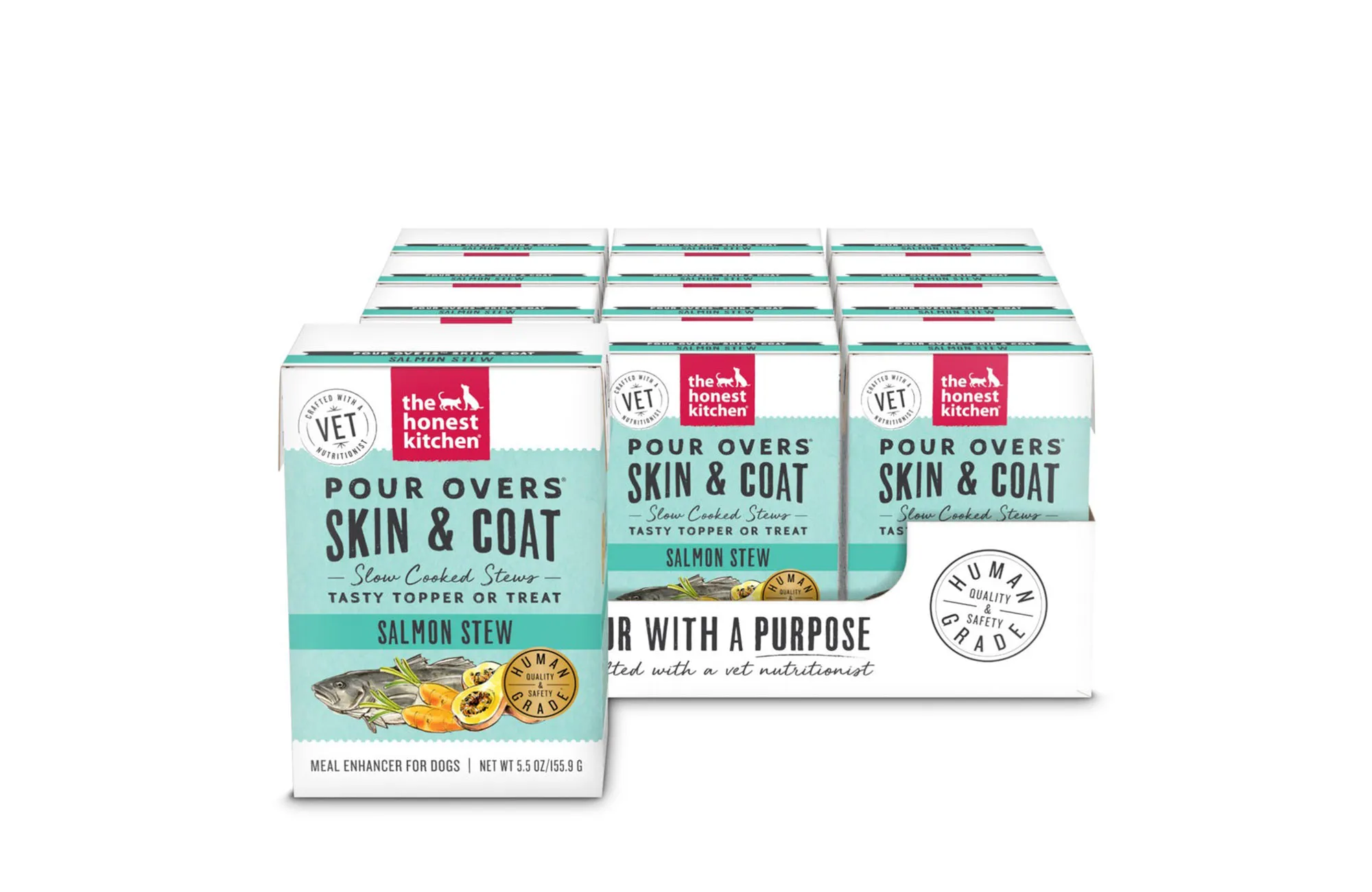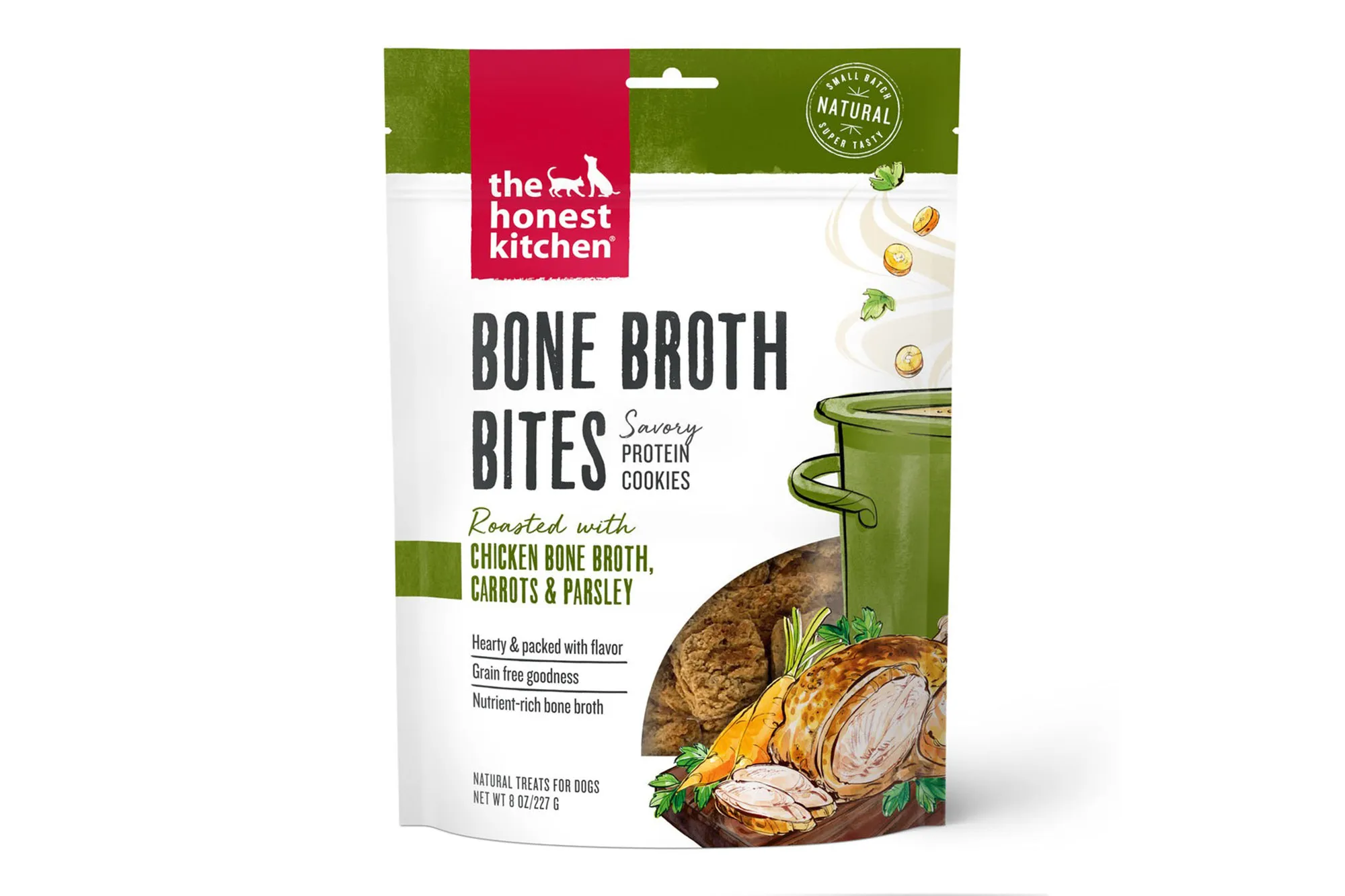Pet food has evolved significantly from simple kibble, with more pet parents now seeking options that actively support their dog’s long-term health and well-being. This shift has brought “The Healthy Kitchen Dog Food” concept to the forefront, characterized by transparency, high-quality ingredients, and minimal processing. Among the pioneers in this movement is The Honest Kitchen, a brand that sets a high bar for what our beloved pets eat. Our goal at Dog Care Story is to explore what makes these human-grade options stand out, ensuring your furry friend enjoys a diet that contributes to a vibrant, healthy life. A well-balanced diet is fundamental not only for daily energy but also for preventing common ailments, including those affecting joints. For example, understanding foods good for arthritis in dogs can be a crucial part of preventative care and management.
What Defines “The Healthy Kitchen Dog Food”? Understanding Human-Grade Standards
The term “human-grade” is more than just a marketing buzzword; it represents a commitment to superior quality and safety in pet nutrition. According to Alexandria Reid, Senior Brand Manager at The Honest Kitchen, a true human-grade pet food must meet three essential criteria: its ingredients must be sourced from the human food supply chain, maintain human-edible status throughout the entire production process, and be manufactured in a facility licensed to produce human food.
This distinction is paramount because the human food supply chain is held to far more rigorous standards than the feed-grade supply chain, which is typically used by most pet food manufacturers. Traditional feed-grade pet foods, for instance, may utilize “4-D meats”—sourced from dying, dead, downed, or diseased animals. While high heat processing is used to eliminate pathogens, many pet parents rightly question whether such ingredients are truly optimal for their best friends. Choosing a healthy kitchen dog food means opting for ingredients that meet the same quality standards you’d expect for your own meals.
It’s important to clarify that while the food is “human-grade” in quality and safety, it is specifically formulated to meet the unique nutritional needs of dogs. Reid emphasizes that The Honest Kitchen collaborates with food scientists and veterinary nutritionists to ensure their products are nutritionally balanced for pets, not humans. This dedication ensures that dogs receive all the necessary nutrients for their specific dietary requirements.
Beyond Kibble: The Processing Difference in Healthy Dog Food
The way dog food is processed significantly impacts its nutritional value. Traditional kibble often involves a method that applies high heat to remove moisture, followed by further drying. To enhance flavor and palatability, liquid fats, flavor enhancers, or digest powders are then typically sprayed onto the finished product. This intensive processing can strip ingredients of essential nutrients and healthy fats.
In contrast, brands committed to providing a healthy kitchen dog food, like The Honest Kitchen with their “Clusters,” utilize a less processed approach. Their Clusters are made from real ingredients that are cold-pressed, roasted, and gently dehydrated until golden. This gentle method helps retain vital nutrients and natural flavors, eliminating the need for external sprays and powders. The natural goodness of the real food speaks for itself, a difference that discerning dogs like Lucy and Prince certainly appreciated in our review. This commitment to minimal processing is key to maximizing the health benefits your dog receives.
Furthermore, the natural preservation methods employed by such brands are a testament to their dedication to health. Instead of relying on artificial chemicals, they use natural ingredients such as vitamin E, mixed tocopherols, and small amounts of rosemary extract to extend shelf life safely. This ensures that every meal remains fresh and wholesome without introducing undesirable additives.
Real-World Testing: Our Pups’ Verdict on The Healthy Kitchen Dog Food
To truly assess the quality and appeal of a healthy kitchen dog food, real-world experience is invaluable. Our Post step-up team enlisted two canine critics for this review: Prince, a discerning Weimaraner owned by Al Murillo, our senior director of commerce partnerships, and my own dog, Lucy, a 55-pound Mini Sheepadoodle. Both are cherished members of their families, and their owners are committed to providing them with the best possible nutrition.
We conducted a two-week trial, introducing a variety of The Honest Kitchen’s treats, Whole Food Clusters (their equivalent of kibble), and meal toppers into their daily routines. We meticulously observed their excitement at mealtime, digestive responses (including stool samples), energy levels, and overall interest in the food. For the human testers, we also considered ingredient quality, ease of use, and packaging. The enthusiasm displayed by both dogs, from eager tail wags to spotless bowls, provided undeniable feedback on the palatability and appeal of these human-grade options.
Lucy’s Experience: Toppers, Clusters, and Dehydrated Delights
My Mini Sheepadoodle, Lucy, practically “inhaled every bite” of The Honest Kitchen products, showing an immediate excitement as new feeding routines kicked in. The Functional Pour Over, a gravy-like topper, transformed her Clusters into an “event” at every meal. We particularly tested the Skin & Coat recipe made with salmon, which pleasantly had no strong fishy smell. These toppers are an excellent way to boost the nutritional value of a dog’s meal, offering recognizable ingredients and providing crucial omega-3 fatty acids that can contribute to overall health and joint mobility. Many pet owners also look for ways to support their senior dogs’ comfort, and products that offer ingredients like those in magnesium oil for dog arthritis can be complementary to a healthy diet for aging pets.
The Clusters, oven-roasted in small batches with cage-free chicken, oats, and easily recognizable vegetables, proved to be a convenient and healthy alternative to fresh food, which often requires significant fridge space and has a shorter shelf life. Lucy also enjoyed the dehydrated dog food, available in flavors like beef and duck, which simply requires adding water. This option offers the nutrients found in fresh food without the spoilage or kitchen odors, making meal prep much cleaner. The savory Bone Broth Bites, packed with protein and nutrient-rich ingredients, were a particular hit as rewards.
 Lucy the Mini Sheepadoodle eagerly waiting for The Honest Kitchen Bone Broth Bites.
Lucy the Mini Sheepadoodle eagerly waiting for The Honest Kitchen Bone Broth Bites.
Prince’s Journey: A Senior Dog Embraces a Healthier Diet
Prince, Al Murillo’s 14-year-old Weimaraner, had been on a consistent grain-free kibble diet for years. As a senior dog, Prince was prone to gas and digestive upset whenever new treats were introduced. This made Al cautious about dietary changes, yet the human-grade ingredients of The Honest Kitchen’s Beef Recipe Clusters prompted him to try.
After a week of consuming 1 ½ cup servings of the Beef Recipe Clusters for breakfast and dinner, Al reported no increase in gas or changes in Prince’s stool. On the contrary, Prince appeared “as healthy and active as ever,” showing palpable excitement at mealtime. This positive outcome strongly suggested that The Honest Kitchen’s human-grade offerings are not only palatable but also easily digestible, even for sensitive senior dogs. Finding foods that aid digestion and reduce inflammation can be especially beneficial for older dogs, aligning with dietary considerations for conditions like arthritis. Exploring a broader diet for dogs with arthritis often emphasizes easily digestible and nutrient-dense options. The successful trial affirmed The Honest Kitchen as Prince’s new go-to food, showcasing the tangible benefits of incorporating a healthy kitchen dog food into a senior dog’s regimen.
A Closer Look at The Healthy Kitchen Dog Food Product Range
The Honest Kitchen offers a diverse range of human-grade products designed to meet various dietary needs and preferences, solidifying its position as a leader in providing “the healthy kitchen dog food” solutions.
Whole Grain Chicken Whole Food Clusters
The Whole Grain Chicken Whole Food Clusters are the brand’s pioneering human-grade dry dog food. Made with real ingredients like cage-free chicken, oats, and broccoli, these clusters undergo minimal processing. They are vet-crafted, providing high-quality protein, healthy fats, fiber-rich fruits and vegetables, and probiotics for digestive support.
Pros:
- First human-grade dry dog food.
- Made with real, recognizable ingredients like cage-free chicken, oats, and broccoli.
- Minimal processing.
- Available in whole grain and grain-free options.
Cons:
- Limited to three flavors: beef, chicken, or turkey.
These clusters are formulated for adult and senior dogs, with puppy-specific options also available. They are crafted in the USA without fillers such as corn, wheat, soy, GMO ingredients, or artificial preservatives, ensuring a wholesome meal.
 The Honest Kitchen Whole Grain Chicken Whole Food Clusters packaging.
The Honest Kitchen Whole Grain Chicken Whole Food Clusters packaging.
Dehydrated Limited Ingredient Duck
For dogs with food sensitivities, The Honest Kitchen’s Dehydrated Limited Ingredient Duck offers a high-quality alternative to traditional kibble. This 100% human-grade, minimally processed food contains just six whole food ingredients, plus essential vitamins and minerals. A 10-pound box yields 40 pounds of food by simply adding warm water, providing a convenient “homemade” meal.
Pros:
- Ideal for dogs with food sensitivities.
- Just six whole food ingredients, plus essential vitamins and minerals.
- Minimal processing.
- Many flavors to choose from.
Cons:
- Not available in smaller amounts for this specific recipe, potentially making it pricey for initial trial.
This product is part of a broader range of dehydrated recipes catering to various needs, including whole grain and grain-free options. It’s an excellent choice for pet parents seeking the quality of fresh food without the associated hassle or cost. The Honest Kitchen also offers Base Mix recipes for those who prefer to add their own protein, ensuring a balanced, nutritious meal in minutes. When managing conditions like pancreatitis, a limited-ingredient diet can often be beneficial, and understanding options like sardines for dogs with pancreatitis highlights the importance of specific ingredient choices for sensitive digestive systems.
 The Honest Kitchen Dehydrated Limited Ingredient Duck dog food.
The Honest Kitchen Dehydrated Limited Ingredient Duck dog food.
Functional Pour Overs: Skin & Coat – Salmon Stew
The Functional Pour Overs are meal toppers designed to enhance both the taste and health benefits of a dog’s food. The Skin & Coat Salmon Stew, in particular, was Lucy’s favorite, adding a delicious, gravy-like texture to her meals. These toppers are made for dogs of all ages and are crafted with a vet nutritionist.
Pros:
- A meal topper that adds taste and health benefits.
- Suitable for dogs of all ages.
- Crafted with a veterinary nutritionist.
- Minimal processing.
Cons:
- Only 4% protein per serving in the salmon variant.
Even if you’re on a budget and continue using kibble, these Pour Overs offer an accessible way to introduce high-quality, human-grade nutrition. Other flavors are available, such as Immunity (beef) and Hip & Joint (chicken), catering to different functional needs.
 The Honest Kitchen Functional Pour Over gravy being served.
The Honest Kitchen Functional Pour Over gravy being served.
Blueberry & Vanilla Goat’s Milk N’ Cookies
These slow-baked cookies are not just delicious treats but also healthy probiotic snacks. Packed with goat’s milk and juicy blueberries, they support digestion and are wheat-free. Their appealing aroma even made me consider them a human snack!
Pros:
- Packed with probiotics and goat’s milk to support digestion.
- Slow-baked for quality.
- Minimal processing.
Cons:
- Smells so good, one might accidentally eat it by mistake!
 The Honest Kitchen Blueberry & Vanilla Goat’s Milk N’ Cookies.
The Honest Kitchen Blueberry & Vanilla Goat’s Milk N’ Cookies.
Chicken Bone Broth Bites with Carrots
These treats are apparently “extra tasty,” as evidenced by Lucy’s improved hearing whenever the treat bag was involved. They are packed with protein and nutrient-rich ingredients, making them excellent rewards. They come in beef, chicken, or turkey flavors.
Pros:
- Apparently extra tasty.
- Packed with protein.
- Nutrient-rich ingredients.
Cons:
- No fish options available for this specific treat.
 The Honest Kitchen Chicken Bone Broth Bites with Carrots.
The Honest Kitchen Chicken Bone Broth Bites with Carrots.
Frequently Asked Questions About The Healthy Kitchen Dog Food
Many pet parents have questions about navigating the pet food landscape, especially when considering options like a healthy kitchen dog food. Here are some insights, with contributions from Alexandria Reid, Senior Brand Manager at The Honest Kitchen.
How Involved is the FDA in Dog Food Regulation?
While the FDA does oversee the pet food industry, Reid explains that pet food labeling and claims are largely handled at the state level, coordinated by AAFCO (the Association of American Feed Control Officials). This means brands must substantiate their “human-grade” claims individually within each state. Products sold on store shelves typically undergo more scrutiny than those sold exclusively online, where regulations can be more relaxed. This distinction is crucial for pet parents evaluating “human-grade” and similar claims from online-only brands.
Should Dogs Only Eat Raw Meat?
Reid clarifies that while dogs do require animal protein, they are not strict carnivores. They are “facultative carnivores,” meaning they thrive on meat-based diets but can also digest and benefit from other types of foods. Plant-based ingredients offer essential fiber for gut health, potent phytochemicals, and crucial vitamins like potassium, magnesium, and vitamin C, all contributing to a well-rounded and healthy diet. For dogs experiencing joint issues, a comprehensive understanding of foods to help dogs with arthritis emphasizes the importance of diverse, nutrient-rich ingredients.
What Should I Look Out For When Shopping for Dog Food?
Terms such as “real,” “premium,” and “holistic” are frequently used across many pet food brands to suggest quality, but these are not regulated terms. Therefore, virtually any food can make these claims. When researching pet food, it’s essential to delve into the company’s ingredients and practices to determine if they align with your definition of these words. A healthy kitchen dog food brand like The Honest Kitchen stands by its ingredients, quality, and safety standards, confident that pet parents will recognize its commitment to raising the industry bar. This transparency is key to making informed decisions for your pet’s health.
Final Verdict
Our extensive review of “the healthy kitchen dog food” options from The Honest Kitchen has concluded with overwhelmingly positive results. The sheer excitement our canine testers, Lucy and Prince, displayed at mealtime far surpassed their usual reactions to traditional kibble. More importantly, we, as their pet parents, felt a profound sense of reassurance knowing they were not just enjoying their food but also receiving nutritious, well-balanced, human-grade meals with every bite.
The quest for the best dog food can often feel endless, but as a dedicated dog mom, I confidently recommend The Honest Kitchen. Their commitment to quality, transparency in sourcing, and minimal processing truly elevate the standard of pet nutrition. If you’re looking to provide your dog with a diet that prioritizes their health, happiness, and overall vitality, exploring The Honest Kitchen’s range is a highly worthwhile step. Give your dog the gift of a truly healthy kitchen dog food, and watch them thrive.
